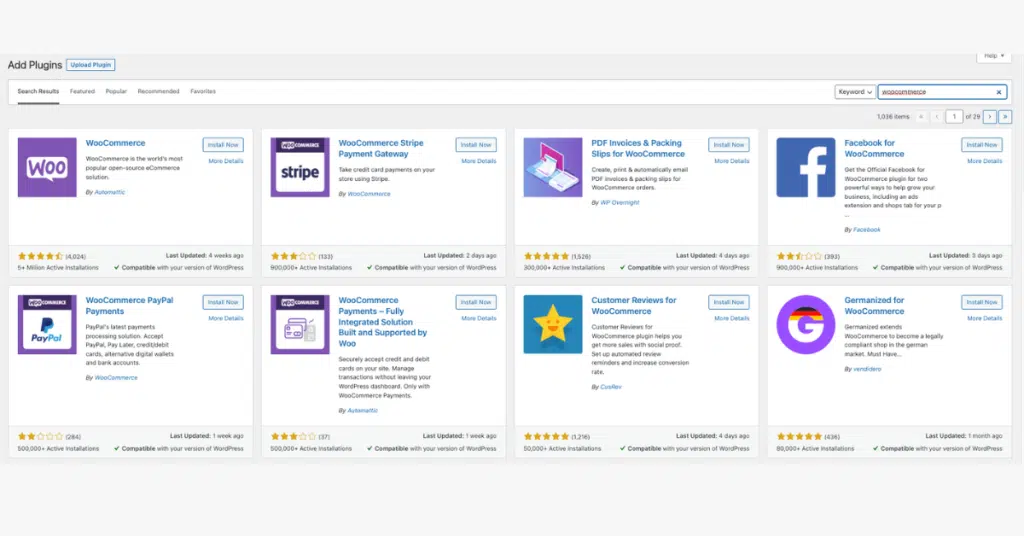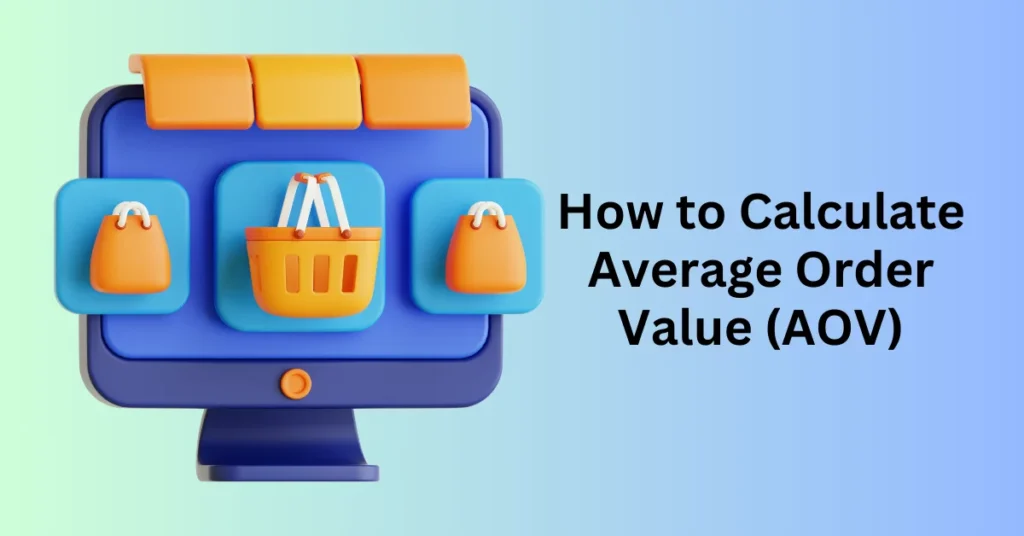When running an eCommerce store, one of the most important metrics to monitor is Average Order Value (AOV)—the average amount your customers spend per transaction. AOV provides valuable insights into customer buying habits, enabling you to understand their preferences better and optimize your pricing and product strategies. By analyzing AOV, businesses can make informed, data-driven decisions that directly contribute to revenue growth.
Tracking and improving AOV not only increases earnings but also opens the door for more strategic upsell and cross-sell opportunities. By encouraging customers to purchase additional or higher-value items, you can significantly boost your store’s profitability. Additionally, focusing on AOV enables you to create more personalized shopping experiences. This can result in higher customer retention and increased satisfaction.
Ultimately, understanding and leveraging AOV is critical for scaling your online store effectively. By continuously monitoring this metric, you can fine-tune your marketing efforts. It also helps you adjust pricing models and product offerings. This approach maximizes sales and fosters long-term business growth.
What is the Average Order Value (AOV)?
Average Order Value (AOV) refers to the average amount a customer spends during a single transaction in your online store. It’s a key performance metric that helps businesses measure customer spending behaviour and track sales efficiency over time. To calculate AOV, you simply divide the total revenue by the number of orders placed over a specific period.

For example, if your store generates $10,000 in net sales from 200 orders, your AOV would be $50.
Why Average Order Value Matters
Tracking AOV is crucial for understanding how much customers are willing to spend, and it provides actionable insights into their buying patterns. This is particularly important in industries like eCommerce, retail, and hospitality, where maximizing customer value is essential.
For an online clothing retailer, AOV data shows whether customers are purchasing single items or a mix of products per order. This insight can shape strategies to boost revenue. For example, upselling suggests higher-end or complementary products at checkout. Bundling discounts can also encourage customers to add more items to their cart.
Analyzing AOV offers businesses a deeper understanding of customer purchasing behaviour. It can reveal whether customers prefer frequent, lower-value purchases or less frequent, high-value transactions. These insights are invaluable for shaping your overall marketing and sales strategies.
A business with low AOV may focus on offering volume discounts or free shipping for orders over a certain amount, encouraging customers to spend more per transaction. Conversely, a business with higher AOV might focus on personalized upselling tactics or loyalty programs that reward large purchases.
Adjusting pricing or creating exclusive bundles based on AOV trends can also lead to significant revenue growth. For example, if customers regularly buy a pair of shoes, the retailer could introduce a “buy two, get a discount” offer or create a bundle that includes shoes, socks, and accessories.
Besides, monitoring AOV over time can also help identify opportunities to improve customer retention. For example, if AOV drops, it could signal a need to re-engage customers with targeted promotions or introduce value-added services like extended warranties or customization options.
Why Do You Need to Track Average Order Value
Tracking Average Order Value (AOV) is vital for businesses seeking to understand customer spending habits and improve profitability. AOV serves as a key metric for identifying opportunities to grow revenue, enhance customer engagement, and refine marketing and sales strategies.
Understand Customer Spending Habits
Tracking AOV gives businesses valuable insights into how much customers typically spend per transaction, shedding light on customer purchasing patterns. By analyzing AOV data, you can determine if your customers prefer buying in bulk or making smaller, more frequent purchases.
This information allows you to tailor your sales approach effectively:
- Personalized Product Recommendations: If customers often buy small items, you can suggest relevant products based on their past shopping behavior. This approach helps them discover new items they are likely to purchase.
- Encouraging Bulk Purchases: If customers tend to make larger, less frequent purchases, you can incentivize bulk buying with promotions like “buy more, save more” or discounts for larger orders.
These strategies help create a more personalized shopping experience, ultimately encouraging repeat business and increasing customer lifetime value.
Insights into Pricing and Promotions Strategies
AOV is also an excellent tool for assessing the effectiveness of your pricing strategies and promotions. Monitoring how AOV fluctuates during different campaigns or sales events can reveal which tactics drive higher transaction values.
For example:
- Free Shipping Thresholds: If offering free shipping on orders over $100 significantly boosts AOV, this indicates that customers are willing to add more items to their cart to qualify. You can leverage this insight by setting similar thresholds in future promotions to maximize the total value of each transaction.
- Analyzing Discounts: Tracking how discounts or seasonal sales impact AOV helps you determine if these promotions lead to increased spending or merely attract bargain hunters who buy lower-priced items.
By understanding these dynamics, you can optimize your promotions to ensure they both attract customers and drive profitability while also managing customer acquisition costs.
One of the key advantages of tracking AOV is the ability to implement more targeted marketing strategies, especially through upselling and cross-selling. These techniques allow you to maximize the value of each customer’s order.
- Upselling: Encourage customers to upgrade to a higher-end product or a premium version. For instance, an electronics retailer might suggest an advanced model of a smartphone or a laptop, offering enhanced features for an additional cost.
- Cross-Selling: Recommend complementary products to encourage customers to add related items to their cart. For example, if a customer purchases a camera, you might suggest accessories like a camera bag, tripod, or extra batteries.
By offering personalized product recommendations and relevant suggestions during the checkout process, businesses can increase the overall order value. Smarter marketing, such as loyalty programs or targeted email campaigns, can further encourage customers to spend more by providing special offers or discounts on related products.
How to Calculate the Average Order Value?
Calculating your store’s Average Order Value (AOV) is simple and can be done using the following formula:
AOV = Total Revenue / Number of Orders
This formula divides the total revenue generated over a specific period by the number of orders placed during that same period. AOV helps businesses identify customer purchasing trends, analyze sales performance, and optimize pricing and promotional strategies to increase revenue.
Step-by-Step Breakdown:
- Determine the Total Revenue: Calculate the total revenue your store has earned over a specific period, such as a month or quarter. Include all sales generated during this time, accounting for the net revenue after refunds and discounts.
- Count the Number of Orders: Identify the total number of orders placed during that same period. This count should include all successful transactions, regardless of the order size or product types purchased.
- Apply the AOV Formula: Divide the total revenue by the number of orders to get the AOV. This will give you the average amount customers are spending per order, allowing you to spot trends and adjust your strategies accordingly.
How to Calculate Average Order Value
- Example 1: Online Clothing Store
- Total Revenue: $20,000
- Number of Orders: 500
- Average Order Value: $20,000 ÷ 500 = $40
- In this example, the average customer spends $40 per order, which can give insight into product pricing and customer purchasing behaviour.
- Example 2: Electronics Store
- Total Revenue: $50,000
- Number of Orders: 250
- Average Order Value: $50,000 ÷ 250 = $200
- Here, each customer spends an average of $200 per transaction. The higher AOV suggests the store may be selling higher-priced products or successfully using upselling techniques.
Why Average Order Value is Important?
Understanding AOV allows businesses to make more informed decisions about pricing strategies, customer incentives, and product bundling. A store with a lower AOV might consider offering volume discounts or promotions such as free shipping to encourage customers to buy more. Conversely, a business with a higher AOV might focus on upselling premium products or promoting add-ons that enhance the value of the initial purchase.
Optimizing AOV for Growth
- Upselling and Cross-Selling: Encourage customers to purchase higher-end products (upselling) or additional items (cross-selling) that complement their original purchase.
- Strategic Promotions: Offer free shipping or discounts for orders over a certain threshold to encourage larger purchases.
- Product Bundles: Create product bundles to offer customers a better deal when they purchase multiple items together.
Regularly tracking and analyzing your store’s AOV helps you better understand customer spending patterns and allows you to fine-tune your sales and marketing strategies for maximum profitability. By implementing data-driven adjustments, businesses can encourage larger transactions, optimize pricing, and drive long-term revenue growth.
WordPress Plugins to Increase Average Order Value
Upsell plugins are essential for boosting your store’s Average Order Value (AOV). They encourage customers to add more items to their purchases or upgrade to higher-value products. By using these tools, businesses can implement effective upselling and cross-selling strategies. These strategies are crucial for increasing revenue and maximizing the value of each transaction.

Here are three popular WooCommerce plugins that can help enhance your upselling efforts:
WooCommerce Boost Sales
The WooCommerce Boost Sales plugin is designed to show related or premium products during a customer’s shopping experience. By suggesting complementary or higher-end items, this plugin encourages shoppers to add more products to their cart or upgrade their selections.
The main advantage of this tool is its ability to increase AOV with minimal effort. Customers are already browsing, and the subtle product recommendations create opportunities to raise the final order value without disrupting the shopping flow.
WooCommerce Checkout Add-Ons
Offering upsells at the moment of checkout is one of the most effective ways to increase sales. The WooCommerce Checkout Add-Ons plugin allows businesses to offer additional products or services directly on the checkout page. Examples include gift wrapping, priority support, extended warranties, or personalized messages. Since the customer is already committed to making a purchase, presenting relevant add-ons at this stage makes them more likely to accept these offers, significantly boosting the potential value of each sale. These add-ons can be tailored to align with the customer’s preferences, ensuring that the offers feel personalized and relevant.
Upsell Order Bump Offer for WooCommerce
The Upsell Order Bump Offer plugin is an excellent tool for presenting complementary products right before the customer completes their purchase. Known as “order bumps,” these offers typically feature low-cost, relevant products that complement the items already in the cart. For instance, if a customer is purchasing a camera, the plugin might suggest a memory card or protective case as an add-on. Because the product is relevant and inexpensive, the customer is more likely to agree, making it an easy way to increase AOV. This strategy not only adds to the customer’s order but also enhances their overall shopping experience by providing additional value.
How These Plugins Improve Average Order Value
These plugins enhance the shopping experience by offering smarter, more targeted product suggestions to customers. They place upsell and cross-sell opportunities at key points, like when customers browse, add items to their cart, or during checkout. This approach helps boost the total value of each transaction.
These well-timed suggestions encourage customers to explore additional options, upgrade their selections, or enhance their purchases with complementary products. This, in turn, helps increase the Average Order Value (AOV).
For example, WooCommerce Boost Sales introduces customers to premium versions of products they are already considering. It suggests a higher-end model or a similar item with enhanced features. This subtle nudge encourages customers to choose a more valuable option without overwhelming them.
Similarly, the WooCommerce Checkout Add-Ons plugin lets you display relevant services or accessories at checkout. These could be extended warranties, gift-wrapping, or product care kits. Since customers are already committed to their purchase, offering these add-ons increases the chances of them accepting the offer, boosting their overall spend.
These strategies not only raise AOV but also improve the customer’s shopping experience. By presenting products that align with their interests and needs, customers discover items they might not have considered. This creates a win-win situation for both your business and your shoppers.
The importance of optimizing eCommerce site Reliable Hosting
Using upsell and cross-sell plugins can significantly enhance both the customer experience and revenue. However, their success depends on the overall performance and reliability of your eCommerce store. That’s where Bluehost becomes essential. As a top hosting provider, Bluehost offers optimized hosting solutions specifically for WordPress and WooCommerce. This ensures your website runs smoothly, even with multiple plugins active.
With Bluehost’s high-performance hosting, you won’t need to worry about slow loading times or technical issues during key moments in the shopping journey, like browsing or checkout. Fast load times and reliable uptime are critical for keeping customers engaged, especially when encouraging them to explore premium products or add-on services. Any delays or lags during these stages can frustrate customers, leading to cart abandonment and reduced revenue.
Bluehost ensures your WooCommerce store remains responsive, even under heavy traffic or when handling multiple transactions simultaneously. This reliable infrastructure allows your upsell and cross-sell tools to function optimally, helping you boost your Average Order Value (AOV). A fast, dependable site not only increases the likelihood of customers completing their purchases but also enhances their overall experience. This builds trust and encourages repeat business.
In short, Bluehost plays a key role in maximizing the effectiveness of your upsell and cross-sell strategies. By providing top-tier performance and reliability, Bluehost enables your store to meet the demands of modern eCommerce, ensuring higher revenue and an exceptional user experience.
How to Increase Average Order Value
There are several highly effective strategies to boost Average Order Value (AOV) in your eCommerce store. Let’s explore some of the most powerful techniques:
1. Implementing Cross-Sell and Upsell Techniques
Cross-selling and upselling are proven methods for increasing profit margins and AOV by encouraging customers to add more products to their cart or upgrade to a more expensive option.
- Cross-Selling involves suggesting complementary products that enhance the customer’s initial purchase. For example, if a customer is buying a camera, you could recommend accessories like a camera case, memory card, or tripod. These products are natural extensions of their purchase and add value without feeling pushy.
- Upselling, on the other hand, encourages customers to choose a higher-end version of the product they’re already considering. For instance, if they’re browsing for a basic smartphone, you might highlight a premium model with more advanced features, such as a better camera or more storage.
Both techniques work because they improve the customer’s shopping experience by introducing them to products they may not have initially considered but would likely benefit from. By enhancing the perceived value of their purchase, cross-sell and upsell strategies help you naturally increase AOV.
2. Offering Bundles or Discounted Add-Ons
Another excellent way to increase AOV is by bundling complementary products or offering discounted add-ons.
- Product Bundles are packages that combine related items at a slightly discounted price. This approach adds value for customers and encourages them to buy more at once, which increases your revenue. For example, an electronics store might bundle a laptop with a mouse, keyboard, and protective case at a lower price than purchasing each item separately.
- Discounted Add-Ons can also be very effective. By offering special deals on additional items based on a customer’s current selection or purchase history, you can entice them to add extras to their cart. For instance, if a customer is buying a gaming console, you might offer a discount on extra controllers or games. This makes it more appealing for them to include these items in their order.
This approach not only helps boost AOV but also provides customers with more value, enhancing their overall shopping experience.
3. Providing Loyalty Programs or Incentives for Larger Purchases
Rewarding customer loyalty or offering incentives for larger purchases is a powerful way to encourage higher spending and increase AOV.
- Loyalty Programs reward customers with points for each purchase, which they can redeem for discounts, free products, or exclusive offers. This strategy encourages repeat purchases and motivates customers to spend more to accumulate points, ultimately leading to a higher AOV. For instance, if customers know they’re close to earning a reward, they may be more inclined to add extra items to their cart to reach that threshold.
- Incentives for Larger Purchases, such as free shipping or percentage-based discounts, are also effective. For example, offering free shipping on orders over $100 can prompt customers to add more items to their cart to avoid shipping fees. Similarly, offering 10% off on purchases above $150 can entice customers to increase their order size to take advantage of the discount.
Final Thoughts: How to Calculate Average Order Value (AOV)
Tracking and improving Average Order Value (AOV) is a key strategy for increasing revenue and gaining insights into customer behaviour. By using techniques like cross-selling, upselling, product bundling, and loyalty programs, businesses can not only boost AOV but also enhance profitability. This is done by reducing costs, such as shipping, and improving customer satisfaction.
To simplify and automate these strategies, it’s important to use WordPress plugins designed for upselling and cross-selling. These plugins allow you to offer personalized product recommendations, showcase complementary or premium items, and encourage customers to spend more—all without needing extra manual effort.
Consider using Bluehost’s WooCommerce hosting for seamless integration of these plugins. Bluehost offers optimized performance that ensures your store runs smoothly, even with multiple plugins active to enhance AOV. With fast load times, high uptime, and easy plugin integration, Bluehost allows your store to scale efficiently. This helps grow your AOV and customer base while maintaining a great user experience.
By combining strategic upselling with reliable hosting, you create the foundation for sustainable growth and increased profitability.


